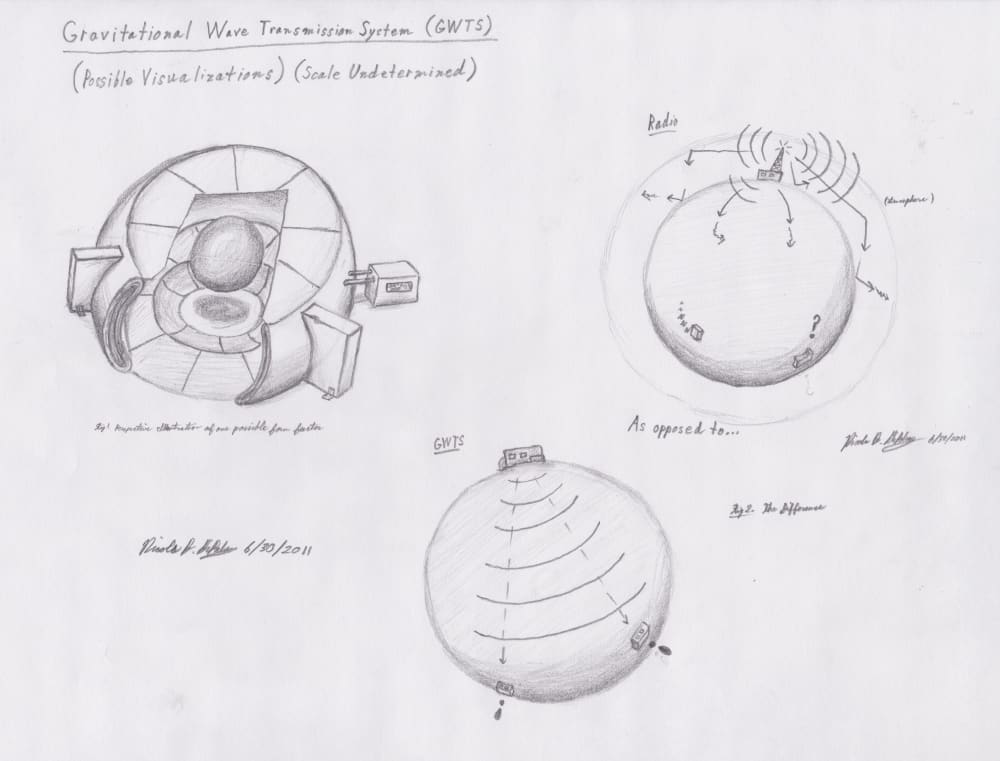The system illustrated in the accompanying diagram is intended for use as means of transmitting gravitational “waves” (field disturbances) through planets and their natural satellites. The advantage of this relative to current data transmission methods is the reduction of interference and maintenance of signal quality within the transmittable range.
The most significant differences between this and other transmission methods are that signals can be transmitted directly through dense masses and intercontinentally with minimal time delay (rather than about the arc comprising the atmosphere and upper layer of crust), as perturbations are effective at the speed of light. Though electromagnetic waves also travel at the speed of light, they dissipate within distances much shorter than the effective distance of a gravitational field.
A device that allows for this must have a chamber containing a constant mass that has variable volume. This follows from a direct interpretation of Newton’s Law of Universal Gravitation (regardless of considerations due to Relativistic correction), in which the intensity of gravitational field emitted by any mass is inversely proportional to the square of the radius of the mass (assumed to be approximately spherical); if constant mass is maintained, variations in volume will translate directly into variations in field strength over the effective range. Variations in field strength can be sequenced in accord with transmitted data just as marginal variations of frequency or amplitude from a particular interval are sequenced to transmit data in radio systems.
Illustrating the function further, said mass must be placed in a vacuum chamber, so that atmospheric gases aren’t able to occupy unfilled volume (thereby disrupting field variation) as the substance expands and contracts.
I’m no materials expert, but I suspect that a mass of boron or mercury may suffice as their naturally liquid state (at room temperature) may allow for the marginal expansion and contraction required for data transmission in this form. However, under the right conditions (temperature, pressure, etc.) I suspect that most materials can be used for this purpose. I’ve considered electromagnetic containment of the mass so that it can be suspended within the vacuum chamber, but suspect that this is not currently a viable method. If so, the containment field (independent of the gravitational field) could also be used to vary the volume of the mass directly by varying its strength. This method is indicated in the diagram to the left.
One necessary addition may be the inclusion of wave analysis hardware with any receiver to filter small variations in the signal received (due to small field variations resulting from the movement of masses within the Earth and in the vicinity of the device).
This is a conceptual abstract of a theoretical system, the utility of which can only be determined after further study and eventual parameterization. I realize that my understanding of the subject matter is incomplete due to my current level of study in Physics, and this may be impossible to implement. Despite this, I’d certainly like to see how possible it is to make it work.
Like this entry?
-
About the Entrant
- Name:Nicola Dipalma
- Type of entry:individual
- Software used for this entry:Pencil and Paper
- Patent status:none

